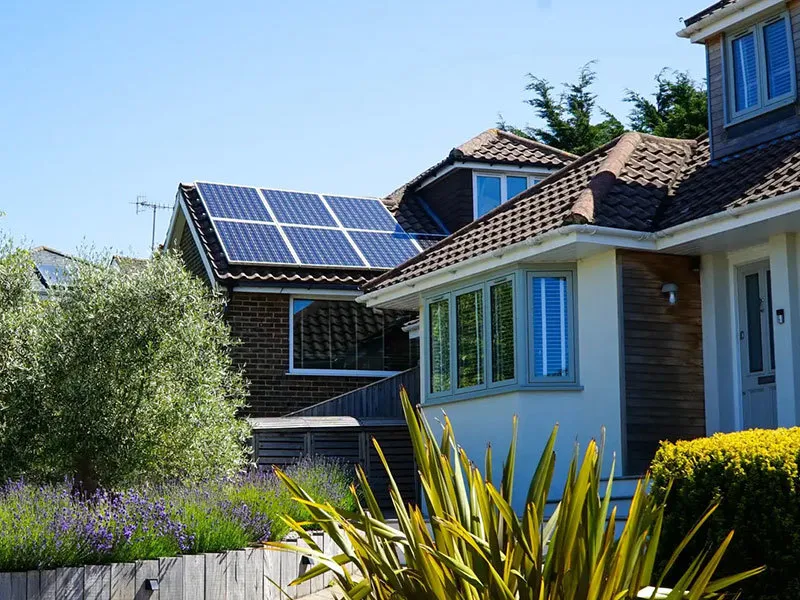calculate number of solar panels
Calculating the Number of Solar Panels for Your Energy Needs
As the world increasingly shifts towards renewable energy sources, solar power has emerged as a popular and sustainable choice for both homeowners and businesses. Solar panels convert sunlight into electricity, which can significantly reduce energy bills and carbon footprints. However, determining the number of solar panels you need to meet your energy requirements can be a daunting task. In this article, we will guide you through the process of calculating the number of solar panels required for your specific needs.
Understanding Your Energy Requirements
The first step in calculating the number of solar panels you need is to understand your energy consumption. This information can usually be found on your electric bills, which detail your monthly energy usage in kilowatt-hours (kWh). To get a clear picture, it’s best to review your energy consumption over the past year and calculate the average monthly usage.
For example, if your monthly energy consumption is 900 kWh, your annual consumption would be 10,800 kWh (900 kWh x 12 months).
Estimating Solar Panel Output
Next, you need to understand how much energy a single solar panel can generate. The energy output of a solar panel depends on several factors, including the panel's wattage, the average sunlight hours in your area, and the efficiency of the panels.
Most residential solar panels have a wattage ranging from 250 to 400 watts. For this example, let’s consider a 300-watt solar panel.
To estimate the daily electricity production, you can use the following formula
\[ \text{Daily Output (kWh)} = \text{Panel Wattage} \times \text{Average Sunlight Hours} \]
If you live in an area with an average of 5 sunlight hours per day, the daily output of one 300-watt panel would be
\[ 300 \text{W} \times 5 \text{hours} = 1500 \text{Wh} = 1.5 \text{kWh} \]
Calculating the Total Number of Panels
Now that you have the daily output per panel, you can determine how many panels you’ll need to meet your energy consumption. First, convert your annual energy usage to a daily basis
calculate number of solar panels

\[ \text{Daily Energy Usage} = \frac{10,800 \text{ kWh}}{365} \approx 29.59 \text{ kWh} \]
Next, divide your daily energy usage by the daily output of one solar panel
\[ \text{Number of Panels} = \frac{\text{Daily Energy Usage}}{\text{Daily Output per Panel}} \]
Using our figures
\[ \text{Number of Panels} = \frac{29.59 \text{ kWh}}{1.5 \text{ kWh}} \approx 19.73 \]
Since you cannot install a fraction of a solar panel, you would round up to 20 panels needed to meet your energy requirements.
Additional Considerations
While the calculation provides a solid estimate, there are other factors to consider before making a final decision.
1. Location and Roof Space Ensure that your roof has adequate space for the panels and faces the right direction (south-facing is ideal in the Northern Hemisphere).
2. Efficiency Losses Be aware of potential energy losses due to shading, inverter efficiency, and temperature. It’s wise to account for these losses by increasing the calculated number of panels by around 10-20%.
3. Future Needs Consider your future energy needs. If you plan to add electric vehicles or expand your home, factor in those additional loads.
4. Local Incentives Many regions offer tax credits and incentives for solar panel installations, which can affect your overall cost and decision-making process.
Conclusion
Calculating the number of solar panels needed to satisfy your energy needs is a straightforward process that begins with understanding your energy consumption and estimating panel output. By following the steps outlined in this article, you can make an informed decision about your solar panel installation, maximizing both your energy independence and contribution to a more sustainable future. Transitioning to solar energy not only benefits the environment but also offers long-term financial savings, making it an investment worth considering.
-
String Solar Inverter: The High-Efficiency Solution for Smart Solar EnergyNewsJul.14,2025
-
Revolutionizing Rooftop Energy with the Power of the Micro Solar InverterNewsJul.14,2025
-
Power Independence with Smart Off Grid Solar Inverter SolutionsNewsJul.14,2025
-
On Grid Solar Inverter: Powering the Future with Smart Grid IntegrationNewsJul.14,2025
-
Monocrystalline Solar Panels: High-Efficiency Power for the Future of Clean EnergyNewsJul.14,2025
-
Bifacial Solar Panel: A Smarter Investment for Next-Generation Energy SystemsNewsJul.14,2025







